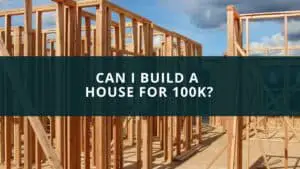Texas has a reputation as one of the most affordable states to own property. But that’s gradually changing, and homes in the state are becoming costlier. So, why are home prices so high in Texas?
Homes in Texas are cheap, costing below the national average. This is due to cheap labor, lower wages, availability of land, weather, and proximity to resources. But the price is on the rise due to high property taxes, zoning laws, low household income, migration, and a rise in construction costs.
However, Texas is still one of the places where you can get cheap houses in the country. Here, we discuss why home prices are cheap in Texas and the factors responsible for the rising cost of homes in the state.
Quick navigation
Average Cost of Homes in Texas
Texas has several affordable cities where residents can buy homes below the national average price. According to Zillow, the typical value of homes in Texas is $295,319, that’s far below the national average of $337,560.
While some people will consider that cheap, it’s not exactly the most affordable. Several states have homes at more affordable prices. Beyond that, the cost of homes in Texas has risen faster than the national average. Between March 31, 2021, and March 31, 2022, home prices increased by 24.1% in the state.
Why Are Homes in Texas Cheap?
Several factors are responsible for the cheap cost of property in the Lonestar State. They include:
1. Cheap Labor
One of the major reasons for the low prices of homes in Texas is the availability of labor. The state has a very strong economy where labor comes cheap. The surplus workforce means that contractors can get the best prices. There are also no construction unions that would normally influence supply and wages.
The construction labor force in Texas consists of several immigrants from neighboring Mexico. Gone are the days when immigrant labor was only unskilled trades. In Texas, immigrants are involved in all levels of construction, such as foundation, roofing, framing, drywalling, landscaping, masonry, etc.
2. Lower Wages
It’s not only the construction industry that doesn’t pay so much. Every industry in Texas has low wages. Its minimum wage of $7.25 per hour is the same as the federal minimum wage. It’s one of the lowest in the country and reflects just how much people make in the state. The low wages influence the price of everything, including homes. This effectively ensures that the price of homes stays low in most areas.
The state doesn’t have a state income tax for individuals and companies. This reflects its pro-business approach that has encouraged many to consider moving there.
3. Availability of Land
Texas is one of the biggest states in the country. Despite having a large population, there’s still plenty of land. Due to the geographical diversity of the state, a large portion of its land is desert areas. So, they’re not useful for any other purpose except construction. This makes land affordable in the state. Since land usually makes up more than 10% of construction costs, cheaper land means cheaper homes.
4. Proximity to Resources
The land isn’t the only construction resource available in Texas. East Texas is a populated forest area and provides the construction industry with the timber needed. The proximity of the state to resources means that the cost of transportation is less. The impact of that shows in the low home prices.
5. Weather
The all-year warm weather of Texas makes it possible to build homes any time of the year. Weather affects construction duration, and most times, a faster building time means a cheaper home. Since builders in the state can work almost throughout the year, they can lower construction times. The fact that the state is tornado-prone also means that most homes aren’t so elaborate.
Factors Driving Up Home Prices in Texas
Homes in Texas are still relatively cheap compared to Hawaii and California. But the cost is gradually becoming unaffordable. This is due to several reasons, which include:
1. High Property Taxes
Although Texas doesn’t collect income taxes, the state and local governments make up for it with property taxes. The property taxes here are quite high. So, anyone who owns a house still has to consider the additional cost. For renters, the property taxes influence how much they have to pay for rent.
2. Rise In Construction Costs
The demand for homes in Texas is high, especially as more people look for affordable property. The result is that the number of skilled construction workers available isn’t enough to meet the demand. Shortage of skilled labor means high wages. Pay for construction workers is rising faster in Texas than in the rest of the country. From 2011 to 2016, hourly earnings rose by 20% compared to the national average of 4.7%.
3. Zoning Laws
The rate of development in the state has also led to stricter zoning laws across cities. With ordinances on land use and construction, the volume of land used for residential construction has decreased. The result is higher demand. Thus, land has also become costlier in Texas and now accounts for 20.4% of home prices in the state.
Even where construction is possible, regulatory compliance has increased costs. This is usually the cost of permits, impact fees, environmental surveys, etc.
4. Low Household Income and Rental Markets
Lower wages in the state mean the home isn’t so affordable, especially with rising costs. This means that many people in the state settle for renting, which further drives up costs. About 38% of people in Texas are renters making it one of the biggest renters’ markets in the country.
There’s a significant disparity between household income and housing prices in the state. This makes homes unaffordable for many in Texas.
5. More People Moving to The State
Migration plays only a small role in the rising costs of homes in Texas. But it’s impossible to ignore this role. The legendary affordability of homes in Texas means that people in costlier states such as California are moving here. These people usually have more disposable income, and even if they don’t, migration already means more demand. The higher demand usually ends up making homes costlier.
In Conclusion
Homes in Texas are quite affordable compared to the national average. But that’s changing very fast. The cost of homes, especially in the state’s major metropolitan areas, is rising faster. However, you’ll still find cheap homes in several parts of the state.




